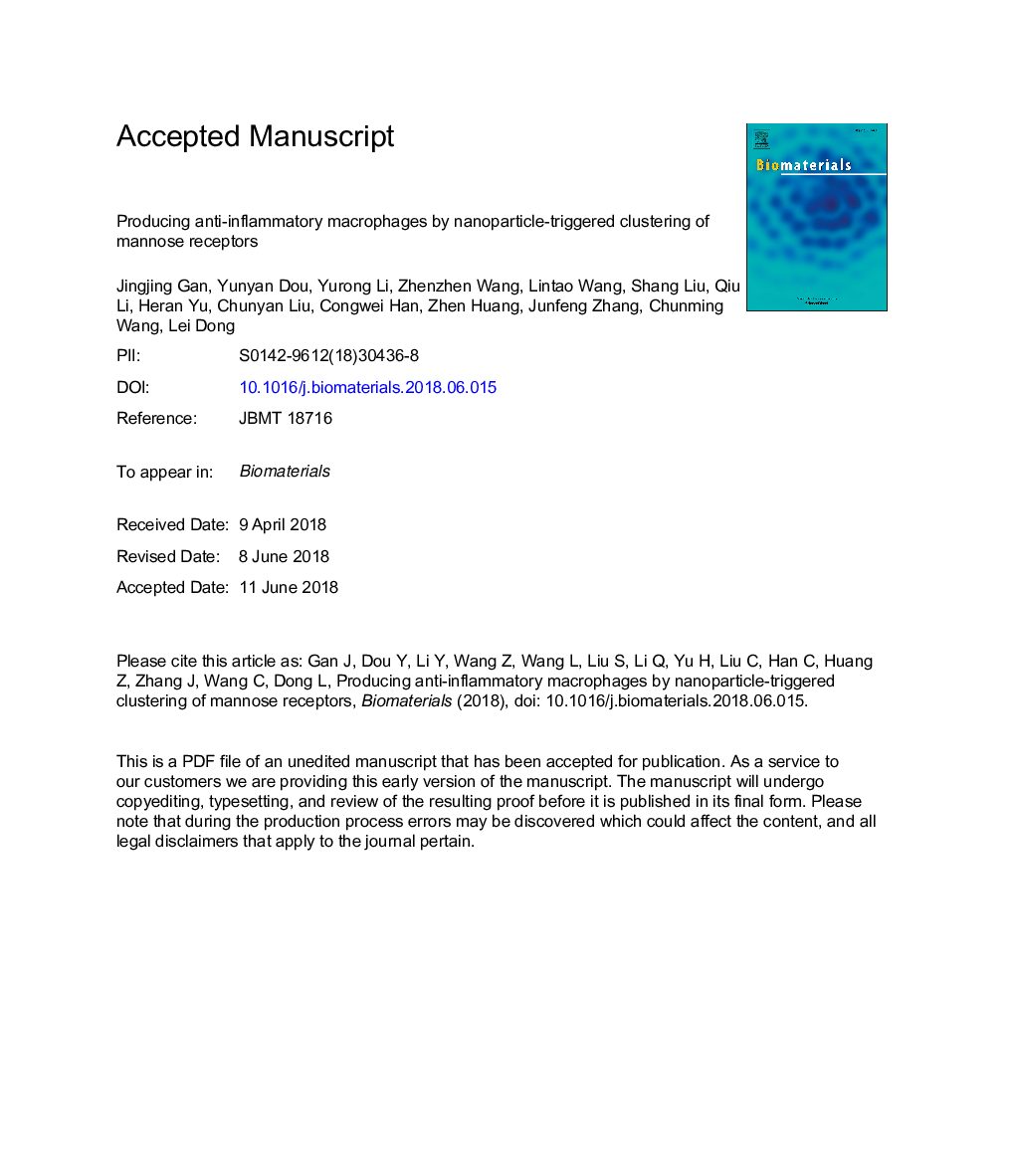| Article ID | Journal | Published Year | Pages | File Type |
|---|---|---|---|---|
| 6484367 | Biomaterials | 2018 | 40 Pages |
Abstract
Macrophages are highly plastic cells that can either mediate or suppress inflammation, depending on their cellular phenotype and cytokine secretion. Inducing macrophages from an inflammatory ('M1') to anti-inflammatory ('M2') phenotype has significant implications for the treatment of inflammatory diseases and regeneration of injured tissues. Although certain cytokines, such as interleukin-4 and -13, are known to induce this phenotypic switch, their therapeutic use in vivo has both safety and efficacy concerns. Here, we demonstrate an alternative approach to change macrophage phenotype from M1 to M2, through inducing the clustering of mannose receptors (MR) on the cell surface, by using carbohydrate-presenting substrates. We prepared and screened glucomannan-decorated silicon oxide of different sizes ranging from 10 to 1000â¯nm, and identified one type (KSiNP30) that could potently induce MR clustering on macrophages and thereby stimulated the cells into an M2 phenotype - as an unexpected consequence of MR activation. Further administration of KSiNP30 in a murine model of inflammatory bowel disease efficiently alleviated the colitis symptoms, indicating the translational potential of our finding for therapeutic applications. In summary, we report for the first time an approach to modulate cellular immune responses by manipulating the assembly of cell-surface receptors, without the aid of cytokines. Our approach may provide insights for the development of new anti-inflammatory therapies.
Related Topics
Physical Sciences and Engineering
Chemical Engineering
Bioengineering
Authors
Jingjing Gan, Yunyan Dou, Yurong Li, Zhenzhen Wang, Lintao Wang, Shang Liu, Qiu Li, Heran Yu, Chunyan Liu, Congwei Han, Zhen Huang, Junfeng Zhang, Chunming Wang, Lei Dong,
